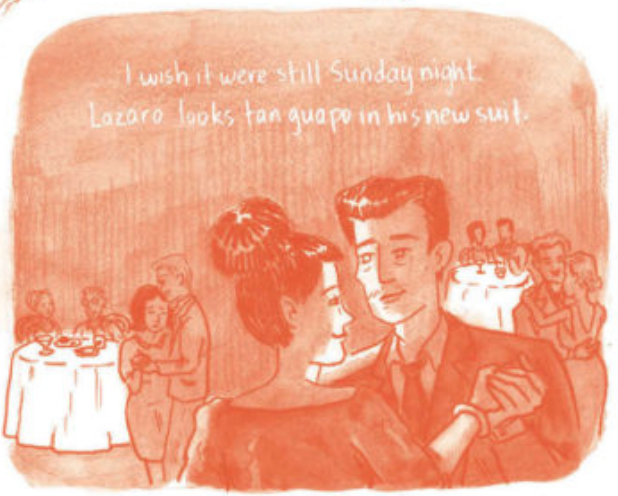
The Process of Making Comics is a series that examines how comics artists put together their work for the magazine. In this entry, Peter Quach and Carolina Alonso Bejarano share what it was like to make Cayo Cruz for the December/January 2018 issue.
THE BELIEVER: How did this comic start?
ALEXANDRA BEGUEZ: Within the last few years, I’ve become interested in documenting my family history, specifically the ups and downs of life during Post-Revolution Cuba and their struggles to immigrate to the United States. I never envisioned myself drawing nonfiction, let alone deeply personal comics, but as I’ve gotten older, I’ve developed this strong sense of responsibility and urgency to document this oral history using pictures and words and share it with others.
When Kristen Radtke invited me to pitch a story for the comics section, I immediately recalled a story my mom told me about the time she was forced to work at a garbage processing plant and ended the day completely covered in soot.
BLVR: What’s your process like?
AB: When I work on comics, I create an outline of the story, which after it’s discussed with the art director, I move onto one or two drafts of the script with small thumbnail sketches of each page. It’s easier for me when writing to also work out the composition and general layout of each page. After the script is locked in, I’ll loosely sketch the whole comic, pruning the story as needed. I may even do a rough color study to get a better idea of the mood and tone I’d like to convey in the story. The goal at this stage is make the actions and compositions clear enough that you understand what’s going on at a glance. I’ll typically make a ton of edits at this stage, especially when working with an editor or art director.
Once everyone is happy with the sketches, I’ll start refining the pencil drawings. My process for this comic started with tracing the sketches to scale on copy paper using my light box. This way I keep as much of the gestural quality and composition of the sketch as I can. I decided early on that I wanted to keep that pencil texture for the final art, so once I was happy with the refined line work I traced that onto a heavier, toothy paper stock, using water soluble graphite to add tone and even more texture. I wore down many a pencil to get those crisp, dark lines. I hand lettered the text on a separate piece of paper to keep things neat. When I finished penciling the final artwork, I scanned everything and added digital color in Photoshop.
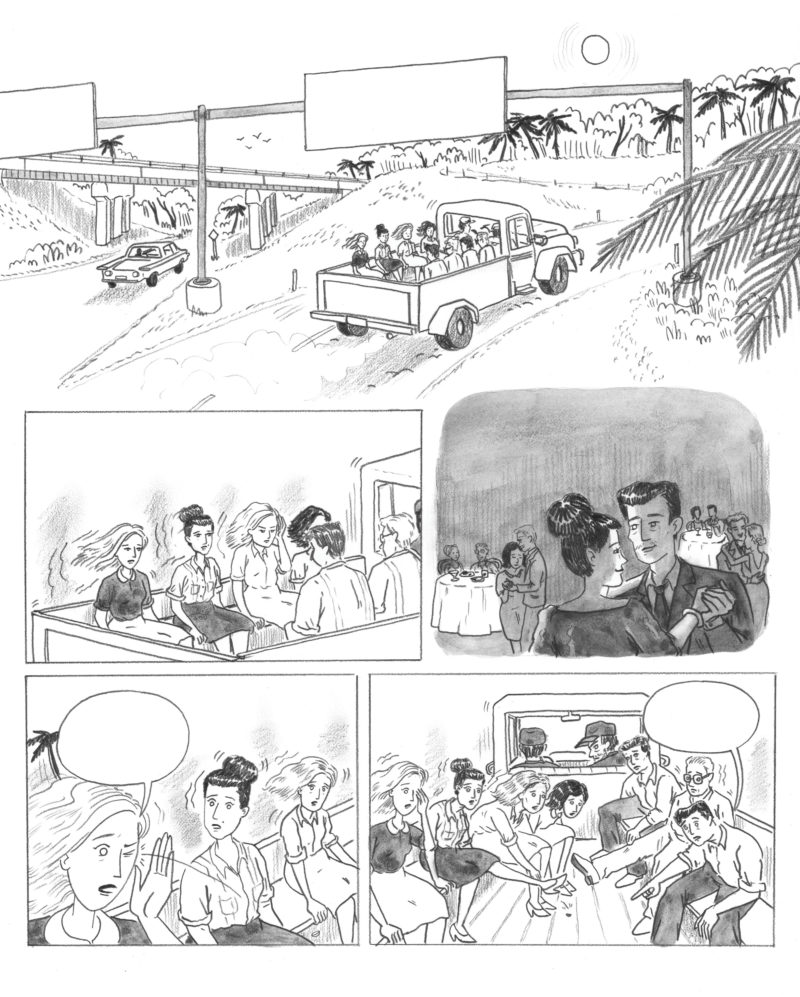
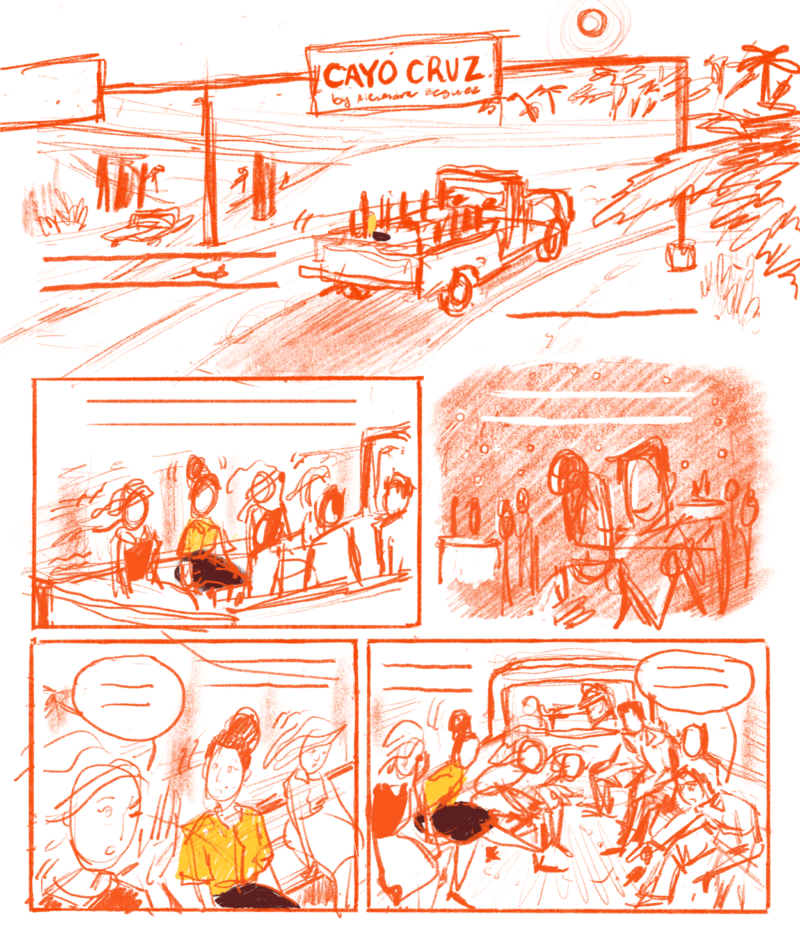
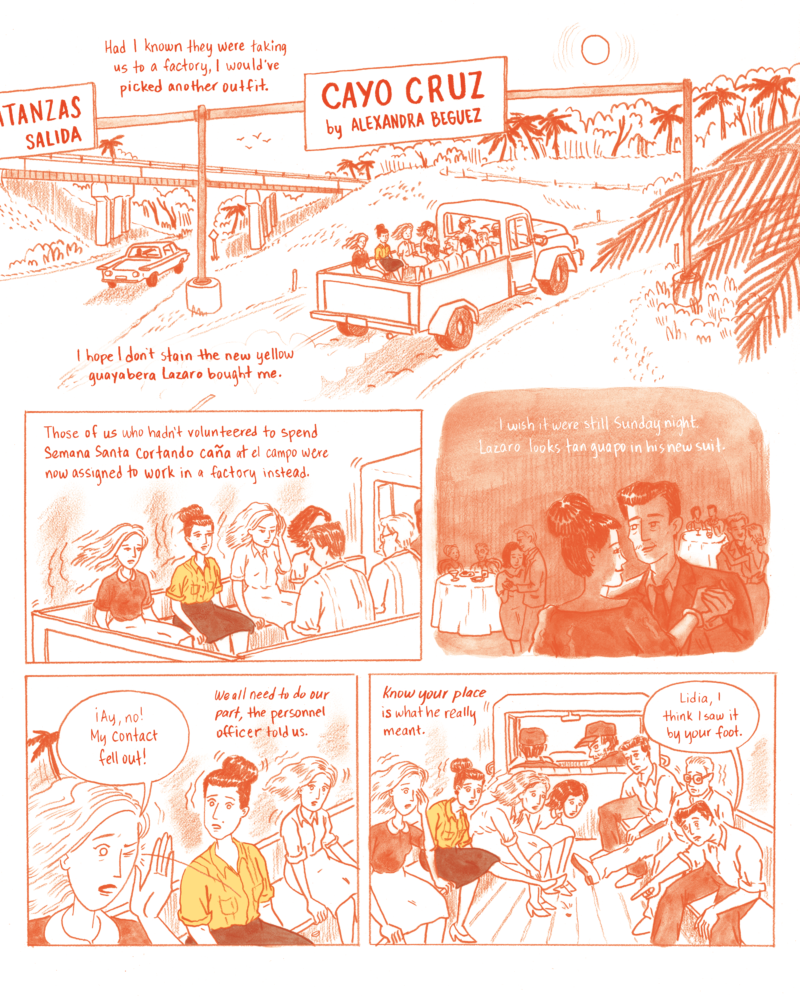
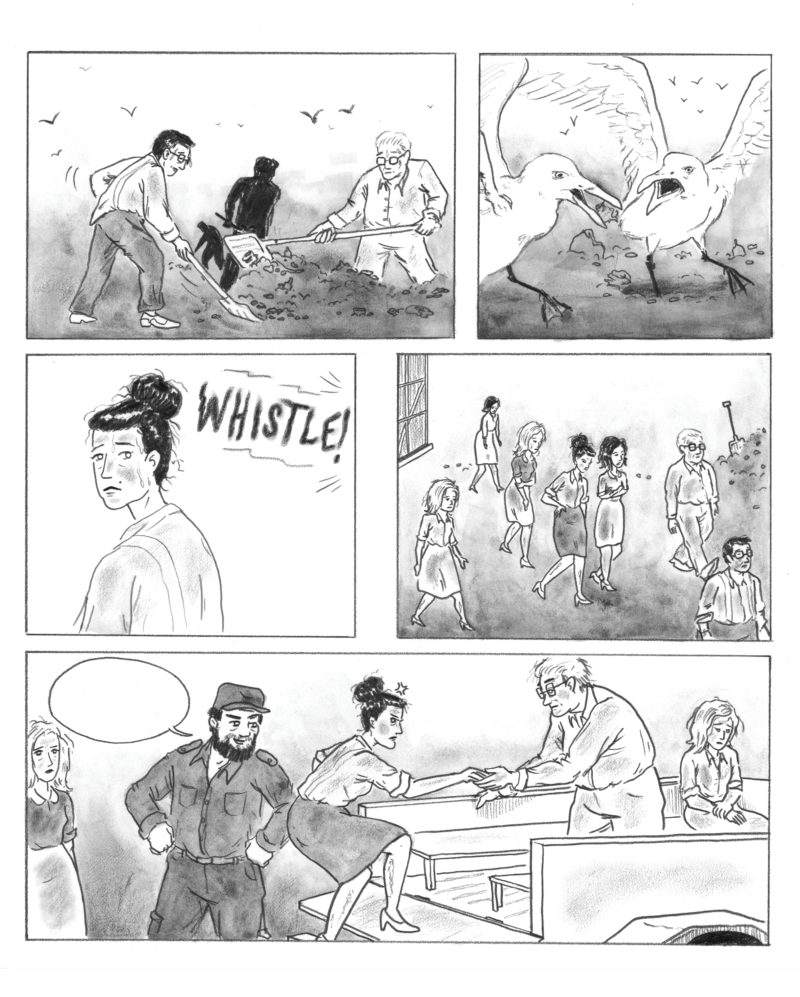
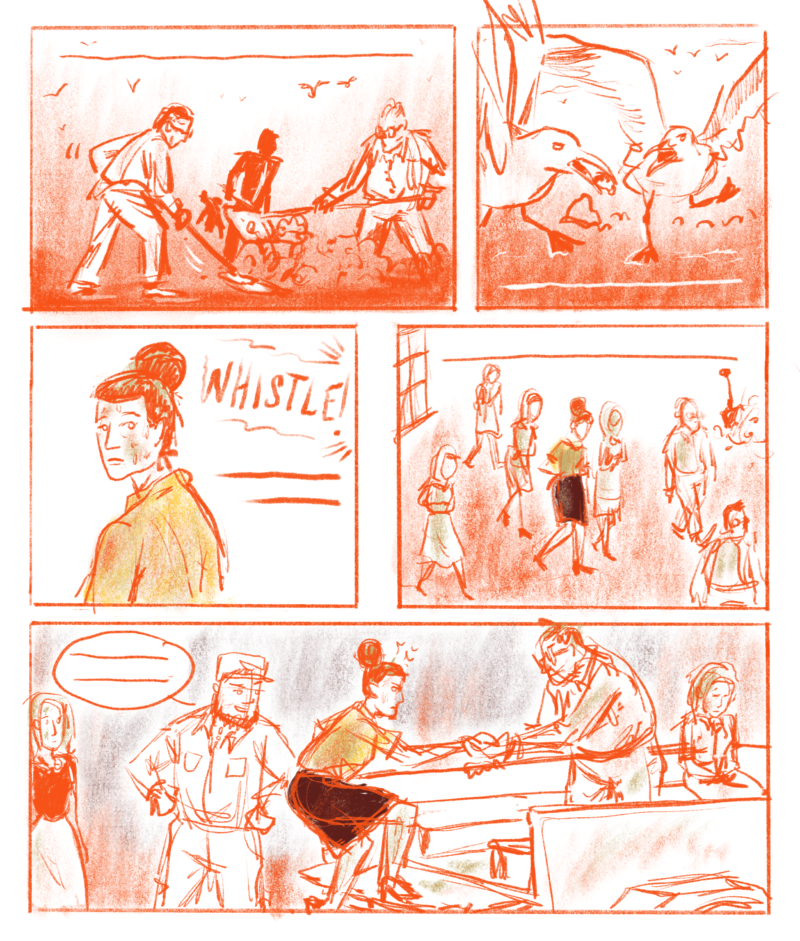
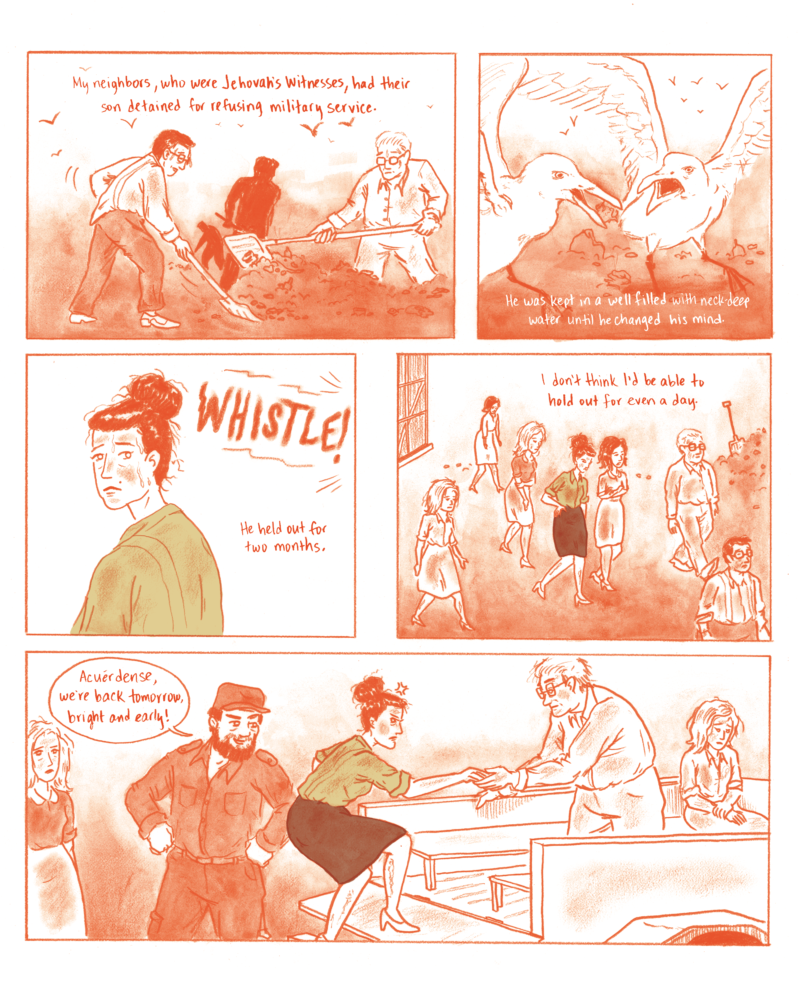
BLVR: Was any aspect of making this work particularly challenging?
AB: Putting aside the back and forth of writing and editing and writing a story, I put a lot of pressure on myself when I make comics about my family’s immigrant history. I’m constantly towing the line between being faithful to my mom’s personal account and writing a cohesive story that resonates with everyone. I only recently started creating nonfiction comics, so I still find the process daunting.
Acquiring all the information I needed to make this comic was a lot of work. I interviewed my mom several times, making sure to get plenty of details and descriptions of the people and locations in her anecdote. My mom speaks Spanish, so I had to I transcribe the recorded interviews into english before sitting down to read everything over (and over). I had to weed out a good chunk of our conversation before I even wrote the outline.
BLVR: What drives you to create new work?
AB: I have a compulsion to draw and tell stories. There are all these stories and characters swirling around in my head that only become real when I record them on paper. Creating work forces me to process my thoughts and feelings and learn new things about myself. It’s also a way to safely open myself up to others.
BLVR: Without naming any comics artists, what influences you most?
AB: I’m drawn to stories that transport me into the mind space of a character and lets me uncover their desires and motives, what makes them tick. Artistically, I like to see an unapologetic use of color and experimental page layouts.
BLVR: Which comic should we drop everything and read right now?
AB: Stages of Rot by Linnea Sterte and The Pipers by Paul Du Coudray and Elizabeth Haidle.
BLVR: What are you working on next?
AB: I’m illustrating a chapter in Sarah Mirk’s upcoming graphic novel Guantanamo Voices: Human Stories from the World’s Most Infamous Prison (coming out in 2020), which will serve as an oral history of the people who spent time at Guantanamo since the opening of Camp X-Ray in 2002. I’m still working on documenting more of my family’s oral history and finishing up a whimsical (and very much fictional) collection of short comics.





